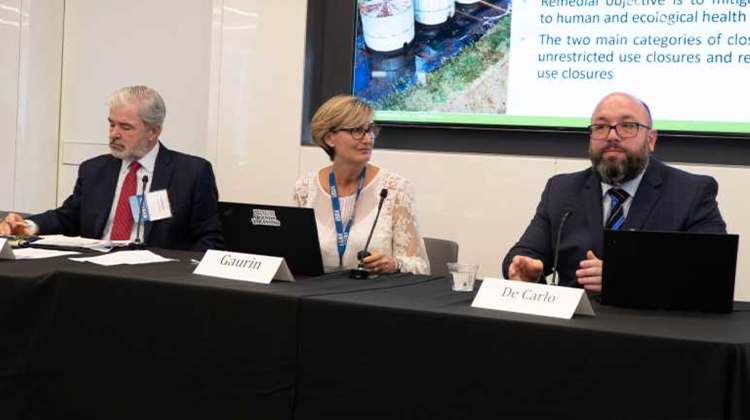VERTEX’s Christopher De Carlo, Senior Technical Advisor, Environmental Insurance and Sandra Gaurin, Vice President, Client Services & Technical Support, along with Scott Davis, Partner at Husch Blackwell led a compelling discussion on “Reopening Closed Remedial Sites” at the 2024 Spring Membership Meeting in New York. The panel discussed the current legal and regulatory landscape affecting formerly closed remedial sites that may be reopened and the reasoning why to help provide an understanding of reopeners and what to expect. A video replay of this presentation is available On Demand to members on AIRROC’s video library platform.
The following are some of the top key takeaways from the presentation:
Primary drivers of reopeners. Sites that have already obtained regulatory closure can be reopened under the following conditions: changes in regulations; new regulated substances; change in site conditions; unknown presence of discontinuous contamination; and insufficient regulatory oversight at time of closure.
Changes in regulations and new regulations. Federal law allows states to manage their own environmental management program as long as they stipulation that they adopt EPA rules and regulations as the baseline. States can re-evaluate previously established regulatory guidance values and make them more stringent as well as regulate substances that are not federally regulated. Under the Safe Drinking Water Act, the EPA is required to evaluate 5 or more contaminant substances every 5 years.
Changes in site conditions. Many sites closed to alternative standards and are issued restricted closures based on site conditions −Industrial, commercial, and residential use sites – vary from state to state. Changes to site use can occur as communities evolve. Repairs performed at restricted use sites where soil and/or groundwater disturbance occurs can also result in changes in site conditions.
Insufficient regulatory oversight. Ecological considerations and impact on human health at contaminated sites have often been qualitative and based on professional judgment. Differences in professional judgment can happen over time particularly with states that have industrial operation triggers. Sites may be administratively closed based on regulatory lapses or removed from agency databases as a case management tool without any remediation. Improper review of regulatory reports or error of judgment also contributes to the problem of deficient oversight.
EPA action that can lead to PFAS reopeners. PFAS has been dominating headlines with some predicting that PFAS-related losses could rival or exceed insurer asbestos-related losses. PFAS is ubiquitous and the EPA is currently in the process of establishing regulations regarding the level of PFAS in drinking water, designating it as a hazardous substance and investigating it for air vapor inhalation exposure. However, there is no demonstrated link between PFAS exposure and any known health condition; rather it is just a potential. Complicating matters, the EPA has acknowledged that there is no current existing remediation technologies or industry standard for PFAS clean up.
Coverage issues arising from PFAS reopeners. The scope of coverage will proceed in similar fashion to other long-term environmental exposure claims. One of the key questions is whether the reopener is a new claim? The answer to this will be critical for claims made policies, settlements and buybacks and for current policies. The primary target will be historic CGL coverage. Applicable injury triggers will vary by jurisdiction and number of occurrences may be difficult to determine. The application of pollution exclusions to PFAS has yet to be litigated and will turn on a number of factors. Many of the coverage issues can be foreseen but the resolution is unknown due to the unique chemical properties of PFAS and their stability in the environment.
